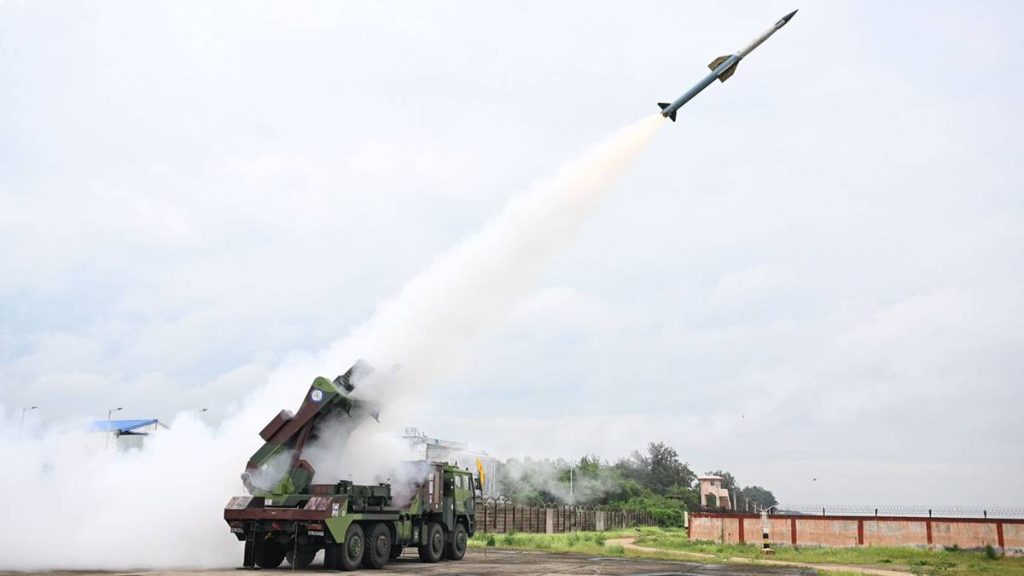The Defence Research and Development Organisation (DRDO) has successfully carried out the maiden flight tests of the Integrated Air Defence Weapon System (IADWS) on August 23 off the coast of Odisha, marking a significant milestone in India’s defence capabilities.
The multi-layered IADWS combines three indigenous technologies—Quick Reaction Surface-to-Air Missile (QRSAM), Advanced Very Short Range Air Defence System (VSHORADS), and a high-power laser-based Directed Energy Weapon (DEW). All components are integrated through a Centralised Command and Control Centre developed by the Defence Research & Development Laboratory (DRDL). VSHORADS and DEW were developed by the Research Centre Imarat and the Centre for High Energy Systems and Sciences, respectively.
During the tests, conducted around 12:30 pm, three different aerial targets—including two high-speed fixed-wing UAVs and a multi-copter drone—were simultaneously tracked and destroyed at varying ranges and altitudes. The QRSAM, VSHORADS, and DEW systems performed with precision, while communication networks, radars, and detection systems also delivered flawless results. The Integrated Test Range at Chandipur confirmed the success through comprehensive data analysis.
Defence Minister Rajnath Singh lauded the achievement, calling it a demonstration of India’s growing self-reliance in advanced air defence.
“This unique flight test has established the multi-layered air defence capability of our country and will strengthen protection of vital facilities against enemy aerial threats,” he said in a post on X, congratulating DRDO, the Armed Forces, and industry partners.
Dr Samir V Kamat, Secretary of Defence R&D and Chairman of DRDO, also congratulated the teams for the successful test, describing it as a major boost to India’s air defence preparedness.
